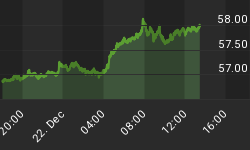The first of two revisions for Q1 2011 Real GDP came in unchanged at 1.8%. Internally though this report is rather concerning.
In a previous post I discussed the increased probability of Q2 GDP contracting (found here) with inventory, government and or trade the most likely sources.
The assumption with that forecast was that the consumer component of GDP would continue to contribute to growth, yet this revision shows the complete opposite occurring making the probability of contraction that much higher.
The consumer contribution to GDP fell from 1.92% to 1.52% down from 2.80% in Q4.
Final sales (a measure of GDP minus inventory changes) was revised lower from .84% to .65% reflecting the weakness in the consumer.
Inventory was in fact revised higher from .93% to 1.19% thus offsetting the drag from the consumer. This raises a big flag though because if consumer demand is falling there is no incentive for manufacturers and retailers to grow inventory.
Increased inventory levels contributed strongly to recent economic growth but should retailers view these levels as adequate or excessive they will in fact begin contracting until consumer demand picks up.
















